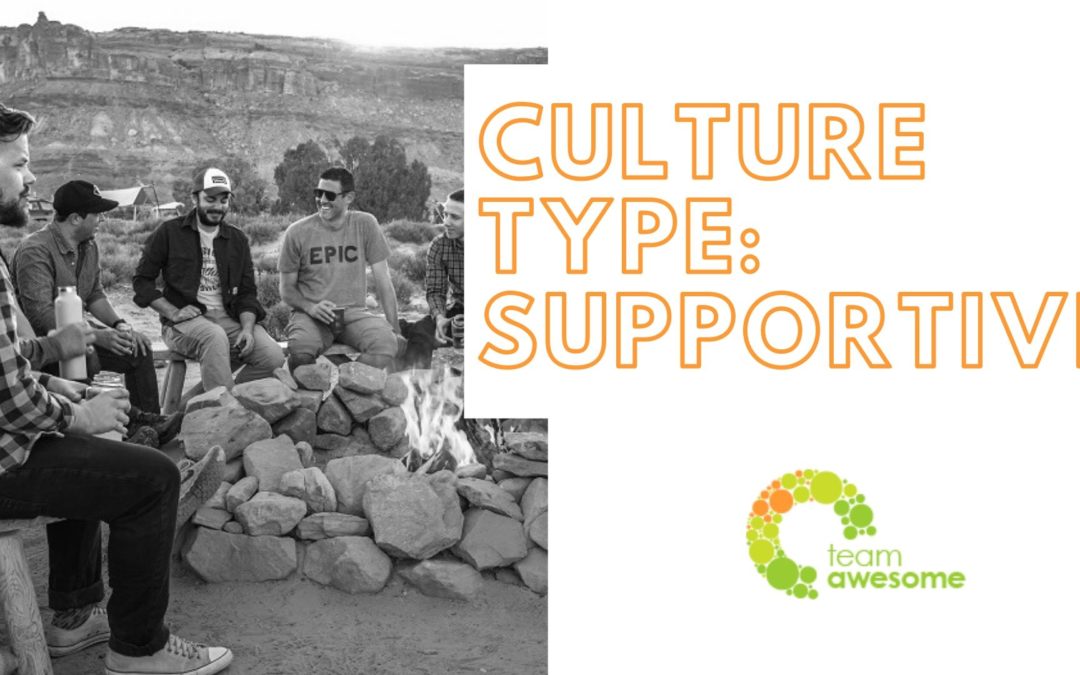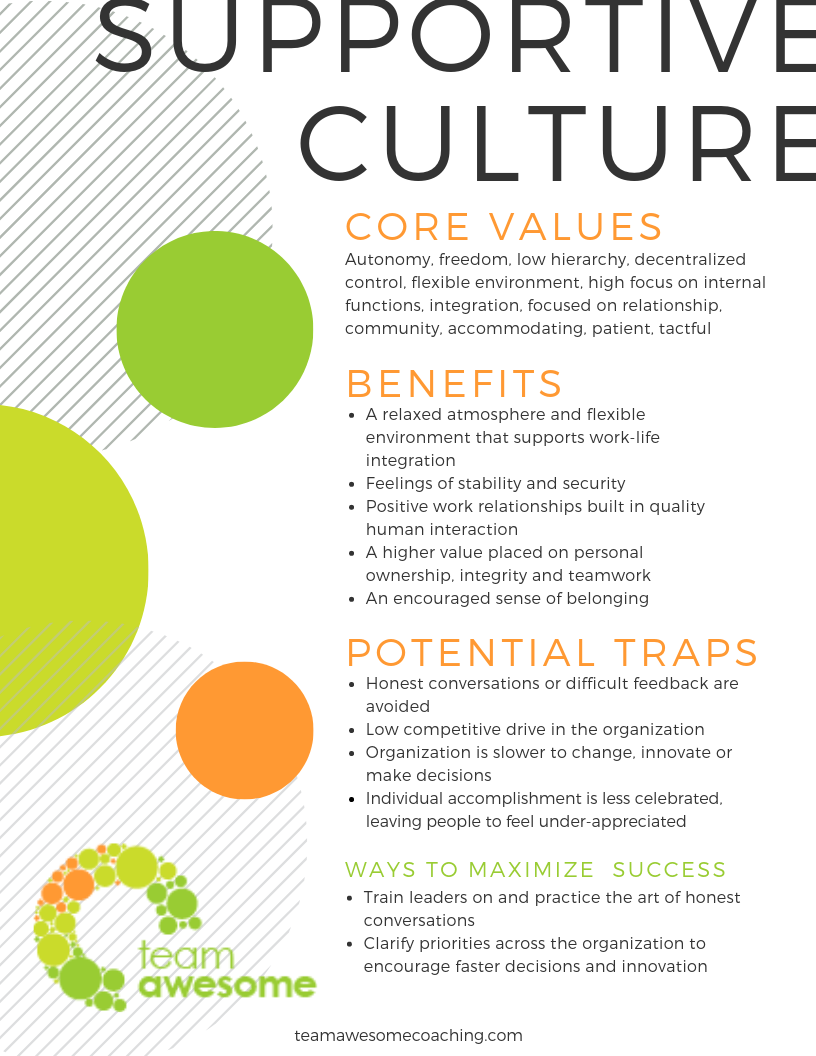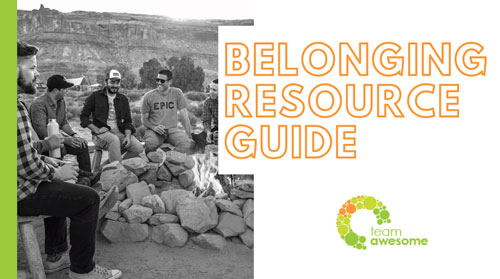As many of you are examining your culture this year, I wanted to offer you some broader perspective of what your company culture might look and feel like to your teams, and offer some very intentional ways to continue to develop your team culture into what you want to be. First, let’s cover a few principles to keep in mind when it comes to culture.
- EVERY organization of every size has a culture. It naturally exists, whether you are aware of it or not or whether you are doing anything about it or not. We must first come to terms with the fact that the question is not “if” you have a culture, but “what” that culture looks like.
- Every type of culture has some pros and cons. Just like as individuals, we cannot be all things to all people. The key is to have awareness of what type of culture your organization has, and then choose how you want to lean into your strengths or mitigate where you are getting stuck. No type is good or bad, better or worse.
- Leadership of the organization plays a large role into how the culture shows up. When you think of what type of culture your company has, think bigger picture in the overall sense, not just for your immediate business unit. Every organization will have elements of all culture types (and leaders with varying styles), but tend to have a primary culture type.
Here we have simplified styles into four culture types. Have fun, and hopefully this will provide you with some ideas and introspection about where to go next to cultivate your company culture with intention.
Here is one of the four culture types that we are focusing on today.
Supportive
Primarily Supportive cultures offer more autonomy and freedom, both in decision making and how you do your work. Supportive cultures tend to have lower hierarchy, and operate with decentralized control where each unit can do what they need to do rather than get cut and dry directives from the top. In a supportive culture there is often more acceptance for a flexible environment (jeans or work from home, anyone?). There is an unspoken regard for relationships and the community within the organization. People are supported to be more accommodating, patient, and tactful with one another. There is often a high focus on internal functions, getting things right from the inside out, and groups can integrate well with one another.
Some of the benefits of a Supportive culture include:
- A relaxed atmosphere and flexible environment that supports work-life integration
- Feelings of stability and security
- Positive work relationships built in quality human interaction
- A higher value placed on personal ownership, integrity and teamwork
- An encouraged sense of belonging
A Supportive culture might be getting stuck in these traps:
- Honest conversations or difficult feedback are avoided
- Low competitive drive in the organization
- Organization is slower to change, innovate or make decisions
- Individual accomplishment is less celebrated, leaving people to feel underappreciated
If this sounds like your culture, here are a few things you might try to overcome roadblocks:
- Train leaders on and practice the art of honest conversations
- Clarify priorities across the organization to encourage faster decisions and innovation
Resources:
Enjoy these links to articles that will help you to:
Looking for some solutions to help your team?
- Try the “Better at Feedback” workshop to introduce your leaders to new skills to have honest conversations
- For a more in-depth solution, try the Human Leadership Master Class
Thanks for checking out our culture type resources! Interested in seeing the other types? Watch for my upcoming posts on these cultures:
- Innovative
- Achievement
- Traditional
About the author:
Katie Rasoul is the Chief Awesome Officer for Team Awesome, a leadership coaching and culture consulting firm. She is a TEDx speaker alumna, author of the best-selling book, Hidden Brilliance: A High-Achieving Introvert’s Guide to Self-Discovery, Leadership and Playing Big, and co-host of The Life and Leadership Podcast.
Find out more by visiting www.teamawesomecoaching.com or join the Team Awesome Community for awesomeness coming straight to your inbox. Follow Team Awesome on Instagram, Facebook and Twitter.




Recent Comments